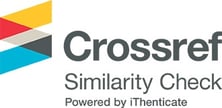Sustainable Competitive Advantage: Transforming Green Practices Into Batik SME Performance
DOI:
10.33395/owner.v9i4.2719Keywords:
eco-branding; innovation; NRBV; SEM-PLS; SCAAbstract
This study analyzes how green entrepreneurship (GE) and sustainable business management (GBM) affect the performance of natural-dye batik SMEs., with sustainable competitive advantage (SCA) serving as a mediating factor. The research population consists of 48 natural-dye batik MSMEs in Kediri registered with relevant institutions. A saturated sampling technique was applied, making the entire population the research sample. The research utilized Structural Equation Modeling-Partial Least Squares (SEM-PLS) to quantitatively investigate both direct effects and mediated relationships among variables. The findings indicate that GE and GBM have no significant direct effect on BP or SCA. Conversely, SCA has a significant positive effect on BP and fully mediates the influence of GE on BP as well as GBM on BP. The study underlines that improvements in business performance through green entrepreneurship and green business management are achieved only if such practices are first shaped into sustainable competitive advantage. These results provide empirical support for the Natural Resource-Based View (NRBV), highlighting that environmental strategies yield sustainable performance only when coupled with inimitable organizational capabilities and provides practical implications for batik MSMEs to focus on product differentiation, innovation, and eco-branding.
Downloads
Plum-X Analityc
References
Amaningsih Jumhur, A., & Prabawati, M. (2019). The Competitive Advantage of Small Industry Batik. KnE Social Sciences, 3(12), 287. https://doi.org/10.18502/kss.v3i12.4094
Ananda, A. S., & Sisdianto, E. (2024). Analisis Laporan Keuangan: Perspektif Non-Finansial Dan Dampaknya Pada Kinerja. Jurnal Media Akademik (JMA), 2(12).
Ayu Kusumawardani, S. D., Kurnani, T. B. A., Astari, A. J., & Sunardi, S. (2024). Readiness in implementing green industry standard for SMEs: Case of Indonesia’s batik industry. Heliyon, 10(16). https://doi.org/10.1016/j.heliyon.2024.e36045
Bharadwaj, S. G., Varadarajan, P. R., & Fahy, J. (1993). Sustainable competitive advantage in service industries: a conceptual model and research propositions. Journal of Marketing, 57(4), 83–99.
Bibi, Y. S., & Narsa, N. P. D. R. H. (2022). Pengaruh enviromental management terhadap kinerja keuangan dengan green innovation sebagai variabel mediasi. Jurnal Akuntansi Universitas Jember, 20(2), 90–105.
Coyne, K. P. (1986). Sustainable Competitive Advantage -What it is, What it isn?t. Business Horizons.
Eccles, R. G., Ioannou, I., & Serafeim, G. (2014). The Impact of Corporate Sustainability on Organizational Processes and Performance. Management Science, 60(11), 2835–2857. https://doi.org/10.1287/mnsc.2014.1984
Fernandez, V. (2022). Environmental management: Implications for business performance, innovation, and financing. Technological Forecasting and Social Change, 182, 121797. https://doi.org/10.1016/j.techfore.2022.121797
Hart, S. L. (1995). A Natural-Resource-Based View of the Firm. Academy of Management Review, 20(4), 986–1014. https://doi.org/10.5465/amr.1995.9512280033
Indriyaningrum, E., & Fachrunnisa, O. (2021). A Model For Sustainable Competitive Advantage Improvement Of Batik SMEs At Central Java Province And DIY (Special Region Of Yogyakarta). Jurnal Aplikasi Bisnis Dan Manajemen. https://doi.org/10.17358/jabm.7.2.272
Kamboj, S., & Rahman, Z. (2017). Market orientation, marketing capabilities and sustainable innovation: The mediating role of sustainable consumption and competitive advantage. Management Research Review, 40(6), 698–724.
Kurniati, E. D., Susilowati, I., & Suharno. (2019). Sustainable Competitive Advantage of SMEs through Resource and Institutional-Based Management: An Empirical Study of Batik SMEs in Central Java, Indonesia. Market-Tržište, 31(1), 61–82. https://doi.org/10.22598/mt/2019.31.1.61
Muo, I., & Azeez, A. A. (2019). Green entrepreneurship: Literature review and agenda for future research. International Journal of Entrepreneurial Knowledge, 7(2).
Nurfitriani, N., Yudhyani, E., & Indrawati, A. (2024). Peran Green Entrepreneurs Dalam Memahami Keberlanjutan Pembangunan Perekonomian Di Kalangan Generasi Muda di Kota Samarinda. YUME: Journal of Management, 7(3), 1297–1305.
O’Donohue, W., & Torugsa, N. (2016). The moderating effect of ‘Green’HRM on the association between proactive environmental management and financial performance in small firms. The International Journal of Human Resource Management, 27(2), 239–261.
Porter, M. E. (2008). Competitive advantage: Creating and sustaining superior performance. simon and schuster.
Prajadi Cipto Utomo, B., Sentosa, I., & Osman, S. (2024). Model Sustainability Competitive Advantage for Manufacturing SMEs: A Structural Equation Modelling Approach. PaperASIA, 40(5b), 295–306. https://doi.org/10.59953/paperasia.v40i5b.252
Purvis, B., Mao, Y., & Robinson, D. (2019). Three pillars of sustainability: in search of conceptual origins. Sustainability Science, 14(3), 681–695. https://doi.org/10.1007/s11625-018-0627-5
Purwatiningsih, P., Nofryanti, N., & Rosini, I. (2023). Pengaruh Competitive Advantage Dan Ketidakpastian Lingkungan Terhadap Kinerja Usaha Dan Implikasinya Pada Keberlanjutan Usaha. Jurnal Ilmiah Global Education, 4(4), 2541–2552.
Raharjo, K. (2019). The role of green management in creating sustainability performance on the small and medium enterprises. Management of Environmental Quality: An International Journal, 30(3), 557–577.
Sudrajat, A. S. E. (2018). Pilar pembangunan berkelanjutan: kajian pengelolaan sumber daya alam dan lingkungan kampung batik rejomulyo semarang timur. Jurnal Riptek, 12(1), 83–88.
Suprayitno, Dwiatmadja, C., & Suharti, L. (2025). Factors affecting batik SME performance and sustainability: The role of government support and business associations. Problems and Perspectives in Management, 23(1), 249–262. https://doi.org/10.21511/ppm.23(1).2025.19
Utomo, B. P. C., Sentosa, I., Osman, S., & Santosa, T. D. (2024). The Influence of Intellectual Capital, Learning Capability, and Technological Orientation on the Innovation Capability and Sustainable Competitive Advantage of Batik SMEs in Indonesia. JINAV: Journal of Information and Visualization, 5(2), 240–249. https://doi.org/10.35877/454RI.jinav3277
Utomo, Mohamad Nur, S. R. P. (2021). Analisis Penerapan Green Business Terhadap Kinerja Ukm Di Kota Tarakan. Jakpi, 1(1), 113–121. https://journal.moestopo.ac.id/index.php/jakpi/article/view/1348
Weng, H.-H., Chen, J.-S., & Chen, P.-C. (2015). Effects of Green Innovation on Environmental and Corporate Performance: A Stakeholder Perspective. Sustainability, 7(5), 4997–5026. https://doi.org/10.3390/su7054997
Wibowo, N. M., Widiastuti, Y., Tampubolon, L. R. R. U., & Bramantijo. (2025). The role of local wisdom on green competitive advantages in batik MSMEs: Green innovation as a mediator. International Journal of Management and Sustainability, 14(2), 601–615. https://doi.org/10.18488/11.v14i2.4275
Widjajanti, K., & Sugiyanto, E. K. (2024a). Competitiveness Improvement Strategies of Msme Blora Batik: Analytic Network Process Approach. International Journal of Professional Business Review, 9(1), e03381. https://doi.org/10.26668/businessreview/2024.v9i1.3381
Widjajanti, K., & Sugiyanto, E. K. (2024b). Competitiveness Improvement Strategies of Msme Blora Batik: Analytic Network Process Approach. International Journal of Professional Business Review, 9(1), e03381. https://doi.org/10.26668/businessreview/2024.v9i1.3381
Downloads
Published
How to Cite
Issue
Section
License
Copyright (c) 2025 Srikalimah, Ahmad Idris, Taufik Akbar, Nuril Aulia Munawaroh, Miftahul Munir

This work is licensed under a Creative Commons Attribution-NonCommercial 4.0 International License.
















